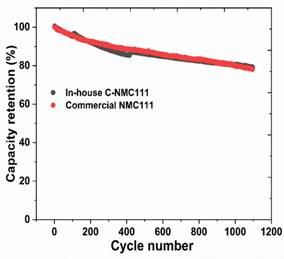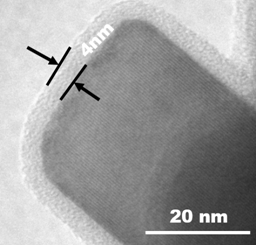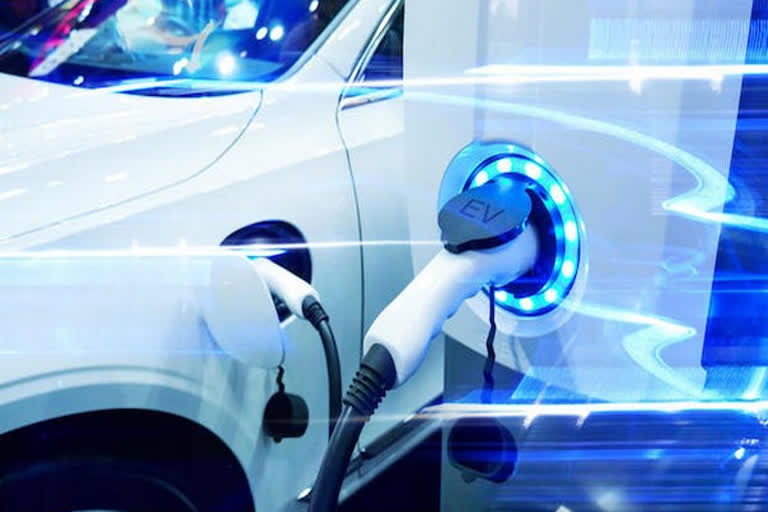New Delhi: In a scientific breakthrough that will provide a big boost to the country’s push for promoting electric vehicles, a government laboratory has developed a non-expensive way of carbon coating to double the life of lithium-ion batteries that are widely used as a power source in EVs or electric vehicles, the department of science and technology said on Saturday.
“Researchers have developed a non-expensive way to coat carbon on lithium metal oxide electrodes for lithium-ion batteries. The life of the lithium-ion cells prepared using these electrode materials is expected to be doubled due to protective carbon coating,” said the department.
Lithium-ion batteries are the most commonly used power source for electric vehicles. However, these batteries require drastic improvement in their lifetime, cost as well as mileage per charge to make EVs popular against conventional petrol and diesel-powered vehicles.
Also read: Govt launches national helpline for reporting online financial frauds
ARCI develops non-expensive carbon coating
In order to solve these challenges, the scientists and researchers at the International Advanced Research Centre for Powder Metallurgy & New Materials (ARCI), an autonomous institute under the Department of Science and Technology developed a technique to coat carbon on lithium transition metal oxides in a single step while synthesizing the oxide itself.
The active components of lithium-ion batteries are cathode, anode, and electrolyte, while commercial graphite is used as anode, lithium metal oxides or lithium metal phosphates are used as a cathode in Lithium-ion batteries. These batteries use a lithium salt dissolved in organic solvents as an electrolyte.
Higher capacity, longer battery life
According to officials, the capacity of the lithium-ion battery determines the mileage of the electric vehicle, which is a big factor in pushing the faster adoption of EV cars in the country as limited range and lack of charging infrastructure on city roads and highways discourage users.

Another important factor is battery life. The number of charging cycles determines the life of a battery before its capacity reduces to 80%. A battery with a higher number of charges, for example, 1,000 charging cycles, before its capacity declines, is considered good for use in electric vehicles.
Also read: Govt to combine GST, Vahan data to cut down transportation cost, time
One-step carbon coating
In order to improve the life cycle of lithium-ion batteries, Indian scientists decided to use carbon coating as carbon being inert to most was considered the best as a coating material to improve the cyclic stability of the active materials.
Officials said carbon coating on the active materials can double the lifetime of the lithium-ion cells but laying a coat of carbon on lithium metal oxide was very challenging during the synthesis of lithium metal oxide material in a single step.

Generally, carbon is coated on oxide materials using a second step, which is not uniform and is expensive as well, they said.
In the method developed by ARCI scientists, a carbon precursor is trapped in between the transition metal hydroxide layers to minimize the reaction with oxygen even if the process of heat-treatment is performed in the air during solid-state synthesis.
Officials said uniform carbon coating on the lithium transition metal oxides --LiNi0.33Mn0.33Co0.33O2 (NMC111) was achieved through this technique.
The electrochemical performance of the lithium-ion cells constructed using carbon-coated NMC111 is at par with that of the commercial lithium-layered oxide cathodes, they said.
Retention of maximum power
In this technology, superior cyclic stability of the carbon-coated product with capacity retention of more than 80% is being achieved even after 1,000 cycles of charging and discharging.
Retention of 80% battery capacity even after 1,000 charge-discharge cycles is a crucial factor as the battery will be useful for nearly three years even if an EV user charges and uses his vehicle every day.
“The researchers at ARCI expect the electrochemical performance to improve further once the lab-scale batch process is replaced by the continuous process to enable the process to be commercially viable,” said the department.
Policy push for Electric Vehicles
The government has announced several measures and subsidies to push the adoption of electric vehicle in the country under its FAME-I and FAME-II (Faster Adoption and Manufacturing of Electric Vehicles in India) policy. Under the FAME-II scheme, the Centre announced a subsidy of Rs 10,000 crores for a three year period ending in 2022.
In May this year, the Centre also announced a Rs 18,100 production linked incentive (PLI) scheme to promote the manufacturing of lithium-ion batteries in the country.
The government hopes to attract an investment of Rs 45,000 crores in lithium ion battery manufacturing over the next 10 years to develop the country as a manufacturing hub for electric vehicles by the end of the decade.
Also read: Direct Tax collection up by 100% despite second Covid wave


